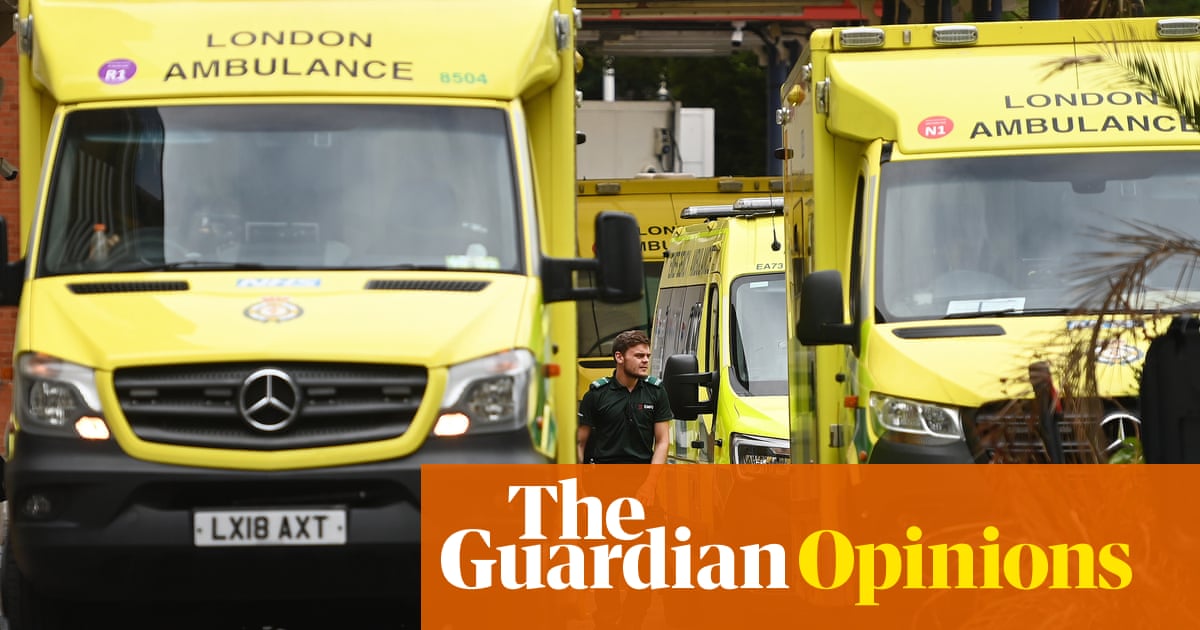
ince the start of the coronavirus pandemic, the World Health Organization (WHO) has emphasised the crucial importance of testing. Speed is of the essence, and three things are crucial: tracking down cases with symptoms; identifying their household cluster and tracing people they’ve contacted; and quarantining them until they are no longer infectious. Testing is the basis of public health detective work to shut down an epidemic. “You can’t fight a virus if you don’t know where it is,” said the WHO director general, Tedros Adhanom Ghebreyesus, recently. “Find, isolate, test and treat every case, to break the chains of transmission. Every case we find and treat limits the expansion of the disease.”
Physical distancing is another strategy, but it’s less effective than testing. In the early stages of an epidemic, when clusters are few and far between, one needs a huge population distancing effort to stop their spread. At that point, most people won’t grasp the scale of the threat and will resist restrictive orders. So testing, contact tracing and quarantining people with symptoms is crucial. As the epidemic becomes rampant, as in London, the policy must switch to intensive testing to protect health workers.
As with other coronavirus outbreaks in Europe, the UK’s epidemic has progressed at different speeds across different regions. On Sunday, Dr KK Cheng, the director of the University of Birmingham’s Institute of Applied Health Research, reported that 50 local authorities had 10 or fewer reported coronavirus cases. Rather than adopting a one-size-fits-all national policy, we need to devolve power to our local authorities and their public health outbreak teams. As Dr Cheng pointed out, “It isn’t rocket science. [Testing] does not even require personal protective equipment. Retired GPs, junior medical and nursing students will be delighted to contribute. Case numbers are doubling every four days. Every minute counts now.”
Large-scale testing is about more than identifying and isolating cases. Information about the virus is power. Testing can help protect health workers and measure the progression of an epidemic. It can also provide evidence about regional variation and how the virus affects people of different ages and genders. Virologists can use information about cases to monitor the nature of the virus and any mutations. And data can show social and behavioural scientists whether their physical-distancing measures are working.
Testing for the virus across the general population, in other words, can tell us whether our assumptions about coronavirus are correct. A new model from Prof Sunetra Gupta and a team of researchers at Oxford University, published yesterday, reaches conclusions that are very different from the Imperial College models. Crucially, the Oxford model is not peer reviewed – so we can’t be assured that its findings are correct – but Gupta suggests that “only a very small proportion of the population is at risk of hospitalisable illness” and that more than half the population have already been exposed to the virus, largely without symptoms.
If this were true, we could expect a big surge of hospitalisations and deaths over the next six weeks, but then the epidemic would recede, probably with no second wave. But to know whether this is actually the case, we urgently need immunity tests that will show whether people have had the virus.
By 10 March, the rates of reported Covid-19 virus tests were one for every 243 people in South Korea, 995 in Italy, 2,585 in the UK, and 38,695 in the USA. On 12 March, the UK government announced it would stop all community virus detection tests, and focus just on health worker protection. By 16 March, when it realised the NHS faced a potential meltdown if the epidemic went unchecked, the government reversed its policy; rather than mitigating the virus, it returned to a strategy of suppression.
Public Health England is now reportedly increasing national laboratory testing capacity in Milton Keynes, but up until now the UK has still only been testing 5,000 specimens per day. In contrast, the Irish government has set up 41 mobile test centres which are processing 100,000 samples per week for a population of 4.9 million (the UK’s population is an estimated 66.4 million).
Every UK medical school and most large hospitals have labs with polymerase chain reaction (PCR) machines. These can amplify tiny genetic pieces of the virus from nasal swabs to indicate a positive test. Batches of 200 tests can be completed in a few hours. We don’t yet have commercially standardised “primers” (tools used to find the viral genetic pieces) but, with authorisation from government, labs could develop their own to provide an adequate service for now. If power is devolved to local labs, our local authority outbreak teams could rapidly escalate testing.
The announcement of mass home testing in the UK is welcome. Around the world, companies are working frantically to develop diagnostic machines where people swabbing themselves can post samples to a lab. Others are using the Crispr-Cas9 genome editor to create a simple colour change on a test strip within 30 minutes. Either would be a game changer if they could be adopted at scale. People with symptoms would be able to self-isolate, identify contacts, report online to a national database, and the problem of mapping and rapidly quarantining those with coronavirus would be largely solved.
Sadly, home testing won’t prevent the deluge of cases facing the NHS in the next few weeks. But if the Imperial modellers are right and the epidemic returns after we achieve suppression, local authorities, using evidence from tests, could better control outbreaks and loosen the restrictions on our economy and our lives.
• Anthony Costello is professor of global health and sustainable development at UCL and a former director of maternal and child health at the WHO












